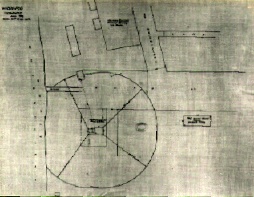Transition at The Forks: 1850-1900
The Forks National Historic Site
By 1850, the Hudson's Bay Company was no longer willing to pay for governing its fur trading territories. There were several options: to sell the land to the United States; to make it a direct colony of Britain; or to become part of Canada, a self-governing colony of Britain's at that time, made up of what is now southern Ontario and southern Quebec. Some Canadians hoped that the North-West would become a colony of Canada, an agricultural hinterland. Rupert's Land would be both a market for Canadian manufactured items and a supplier of food that could be exported to pay for manufacturing growth. With prodding from the British government, the HBC sold its political rights in Rupert's Land to the Canadian government in 1869.
The Métis of the Red River Settlement resisted the transfer to Canada. Used to wielding considerable political power, they became frustrated with a Canadian government who ignored the established land tenure of the Red River settlers. The settlement here was modelled after New France's seigneurial land divisions - long, thin strips of land stretching from the river back to common grazing land, while the Dominion government preferred the township grid model, which would involve re-surveying and re-distributing all the land in the settlement.

River Lots in Saint Norbert
In response to the arrival of federal land surveyors intending to subdivide the land, the Métis occupied Upper Fort Garry at The Forks. From these headquarters, Métis leader Louis Riel drafted a list of rights and formed a provisional government. Negotiations with the Canadian government resulted in the formation of the province of Manitoba in 1870 (known as the 'postage stamp province', it was only 3,860 square miles, or less than 10,000 square kilometres). Despite the apparent Métis-led victory, the government did not respect the terms of the agreement with the Métis - the Métis lost their land, Indigenous self-government was denied and many of the Métis moved further west.
The Canadian government got access to most of the land in southern Manitoba when Treaty No. 1 was signed at Lower Fort Garry with the Cree and Anishinaabe groups that inhabited the area. Indigenous peoples were resettled onto reserves and, with a large influx of new settlers from Canada and abroad, the entire character of The Forks and the growing city around it changed within a few years.
- Date modified :